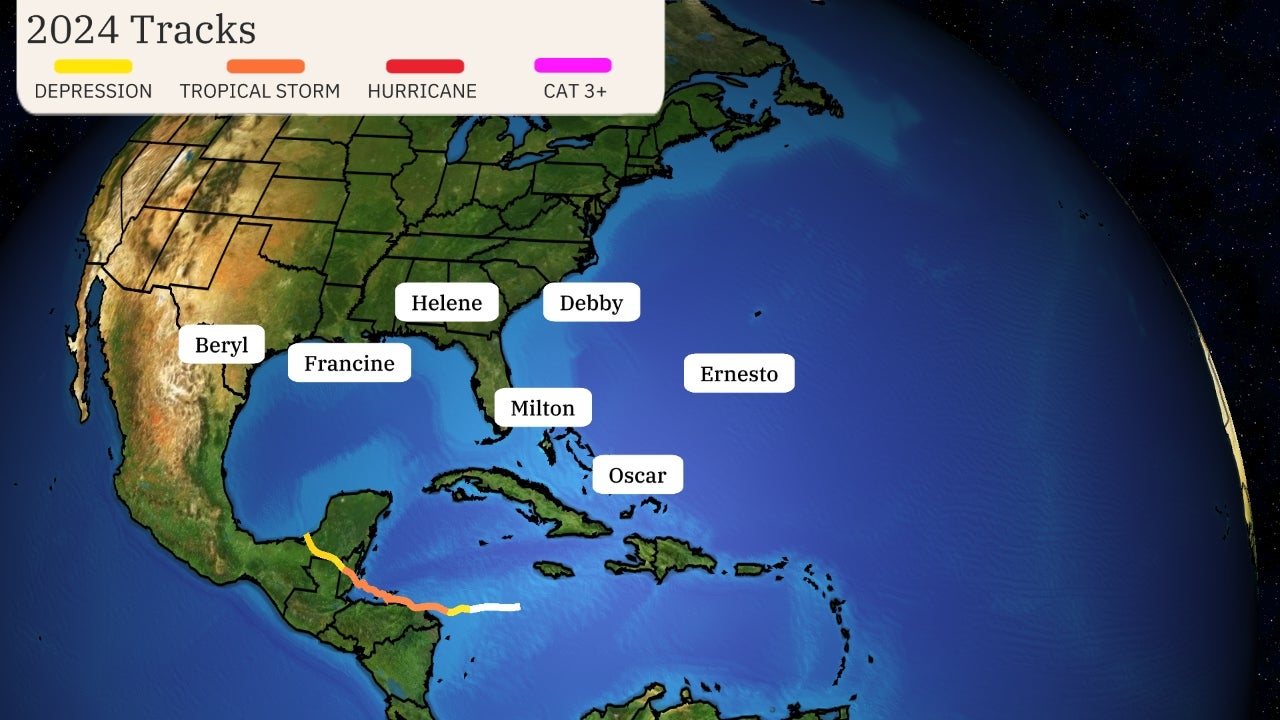HURRICANE CENTRAL
begin quote from:
Hanna Drenching South Texas, Northern Mexico With Heavy Rain as it Slides Inland
By weather.com meteorologists
3 hours ago
weather.com
00:55
Hanna Slams Texas With Strong Winds and Heavy Rain
Hurricane Hanna to spin thru south Texas to northern Mexico
At a Glance
- The biggest danger going forward is flooding rainfall.
- Locally heavy rain will spread across South Texas into northeast Mexico.
- That locally heavy rain will linger well after landfall.
- Rough surf and minor coastal flooding will continue.
Hanna will bring heavy rain and gusty winds to South Texas and northern Mexico as it moves slowly westward into Sunday. Dangerous and potentially life-threatening flooding is possible.
Tropical-storm-force sustained winds are occurring across South Texas.
A 79 mph gust has been reported in Laguna Madre, Texas. A 76 mph gust has been reported in Baffin Bay, Texas, and Harlingen reported a 63 mph gust Saturday evening.
Current Radar and Satellite
(Watches and warnings are issued by the National Weather Service.)
Shingles have been blown off homes in Port Mansfield, Texas, by strong winds. Roofs have been taken off of some boat storage facilities, also near Port Mansfield. More than 7 inches of rainfall has come down so far. Several buoys reported wind gusts of 80-100 mph just offshore late Saturday afternoon.
A sea level rise of more than 6 feet inundated North Padre Island near Corpus Christi as the eyewall of Hurricane Hanna arrived. A wind gust of 68 mph was recorded at the Bob Hall Pier in Corpus Christi, Saturday afternoon. A portion of a smaller pier near Corpus Christi was also destroyed by the rough seas.
More than two feet of storm surge near Sargent, Texas has overwashed the dunes, creating waves of debris on Sargent Beach. A storm surge of around 2 feet has also been recorded as far north as Galveston Island.
Current Alerts
The map below shows the latest hurricane and tropical storm warnings issued. A hurricane warning means winds of 74 mph or greater are expected into early Sunday. A tropical storm warning means winds of at least 40 mph are expected through Sunday.
Current Watches and Warnings
Hanna is tracking westward across South Texas with a slightly slower pace.
Hanna is weakening as it moves through South Texas.
Current Information and Projected Path
Forecast Impacts
Heavy Rain Threat
This will be the primary concern with Hanna for much of southern Texas.
NOAA's Weather Prediction Center has issued a High Risk for flooding rainfall across all of South Texas, noting that "numerous instances of flash flooding are expected across this region."
Flash flooding in the green areas below could be life-threatening and damaging to structures.
Flash flood watches have been issued for all of South Texas and the Middle Texas Coast.
Current Flood Alerts
Locally heavy rain will spread well inland in South Texas into parts of northeast Mexico on Sunday. This locally heavy rain could persist into Monday, particularly in northeast Mexico.
Rainfall totals of over 6 inches are possible in these areas, with locally higher amounts where bands of rain stall for a period of a few hours. A few communities could receive up to 18 inches of rainfall. This could lead to dangerous flash flooding and some river flooding, particularly in the mountainous terrain of Mexico's Coahuila, Nuevo Leon and northern Tamaulipas states.
Rainfall Forecast
(Heavier totals are possible where bands of rain or clusters of thunderstorms stall for a few hours, which could lead to local flash flooding. )
The Rio Grande is expected to rise, potentially to flood stage, through Tuesday.
Winds, Coastal Flooding and Surge
Winds will gradually decrease in South Texas as Hanna moves inland. These winds may be capable of some tree damage and sporadic power outages.
A few tornadoes are also possible across south and south-central Texas through early Sunday.
Persistent winds blowing onshore may produce areas of high surf, rip currents and possibly some minor coastal flooding at high tide, particularly along the western Gulf Coast.
Elevated water levels and storm surge may continue through early Sunday from Corpus Christi southward to Matamoros, especially during periods of high tide.
(MORE: The Danger of Rip Currents)
Storm Archive
Thursday night, Hurricane Hunter reconnaissance mission found winds ticked up just enough to upgrade Tropical Depression Eight to Tropical Storm Hanna, the record earliest eighth named storm, beating Tropical Storm Harvey's record, set in 2005, according to Phil Klotzbach, tropical scientist at Colorado State University. Hanna also formed before the previous record for earliest seventh storm, beating the record set by Gert on July 24, 2005.
Hanna is the first hurricane of the 2020 Atlantic Hurricane season, and is roughly two weeks ahead of climatology. The first hurricane of the season generally occurs around August 10.
Hanna rapidly intensified from Friday into Saturday when winds increased from 45 mph to 90 mph.
This is the intensity that Hanna made landfall with on Padre Island Saturday evening.
.
The Weather Company’s primary journalistic mission is to report on breaking weather news, the environment and the importance of science to our lives. This story does not necessarily represent the position of our parent company, IBM.
The Weather Company’s primary journalistic mission is to report on breaking weather news, t






No comments:
Post a Comment